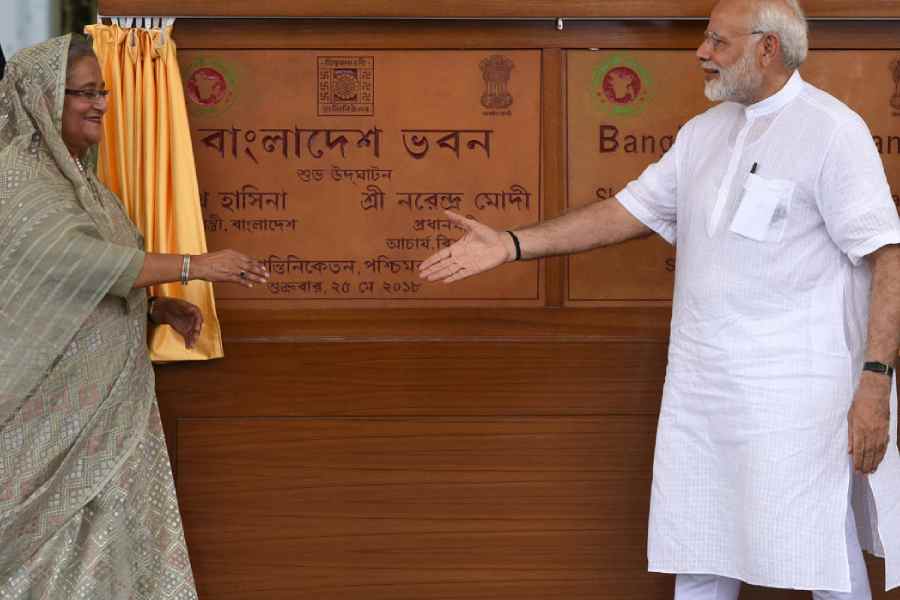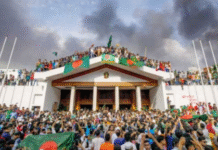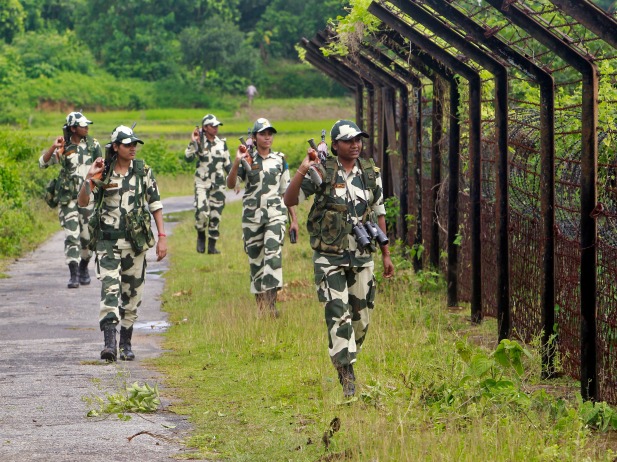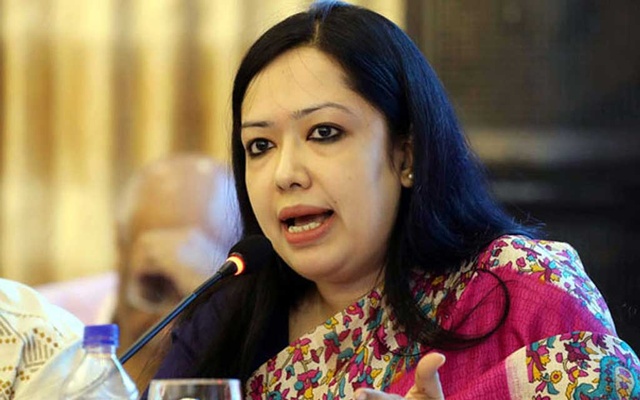
Anti-India sentiment has been a feature of the Bangladeshi political landscape since the establishment of the country in 1971. Even before the euphoria over liberation had subsided, there were charges levelled at the Indian army of stripping the newly-formed country of valuable assets left behind by both Pakistani industrialists and the army. The formation of the Jatiya Samajtantrik Dal, which played a significant role in the coup and counter-coup of November 1975, owed considerably to the antipathy towards the Indian army of its founder, Major M.A. Jalil. The JSD built on sentiments that had been a feature of Maulana A.H.K. Bhashani’s pro-China politics.
In the main, however, anti-India sentiments in post-1971 Bangladesh stemmed from two main sources.
First, there was the reservoir of loyalty to a strong Muslim identity that didn’t disappear with East Pakistan in 1971. The mythology around the liberation struggle cast the pro-Pakistan elements among Bengali-speakers as a small minority, mainly attached to the Jamaat-e-Islami, Nizam-e-Islam, and factions of the Muslim League. Many of them worked as collaborators during the liberation struggle and suffered terrible recriminations subsequently. However, it is important to note that the Muslim religious parties always enjoyed the support of at least 25% of the electorate. With a large cadre base at its command, they always played a pre-eminent role in whipping up anti-India feelings, not least by targeting the local Hindu population.
Predictably, these conflicting traditions have directly impacted the way India has been perceived in Bangladesh. Since Prime Minister Sheikh Hasina Wajed assumed power, the Opposition has propagated the belief that the Awami League has held on to power, despite compromising the lofty standards of democracy, solely because of the unflinching support of successive governments in Delhi. It has also been suggested that India has an exploitative relationship with Bangladesh, depriving it of its share of river waters and using it as a market for consumer goods.
In the run-up to the contentious general election held on January 7 this year, the Opposition insisted there should be a caretaker government to supervise the poll. The issue of a democratic deficit in Bangladesh was taken up actively by the Joe Biden administration and threats were issued against functionaries of the Wajed government in case it failed to comply with what the US felt was decorous conduct. The Opposition — already handicapped by Begum Khaleda Zia’s incarceration and illness and her son Tarique Rahman’s prolonged exile in London — put inordinate faith in the Wajed government wilting under threats from the West. When that didn’t happen and the government went ahead with the elections, securing an estimated 40% turnout, Wajed’s cockiness was attributed to the political and diplomatic support she received from New Delhi. It was made out that the Narendra Modi government had applied pressure on Washington to call off its watchdogs.
The despondency in the ranks of the BNP after the Wajed government brazened out the aftermath of a low turnout was quite marked. The much-hoped-for street protests did not materialise and the fulminations of a section of civil society didn’t cross limits. With the Wajed government not yielding to either pressure or disgust, the opponents of the regime directed their energies at a Boycott India campaign. The presumption is that such a campaign will energise the entire galaxy of non-Awami League forces and put pressure on New Delhi to modify its unequivocal commitment to Wajed. Without India’s backing, Wajed, the Opposition feel, is a paper tiger.
While Boycott India may create short-term hiccups for Indian consumer goods, it will have no effect on the lucrative smuggling operations of cattle from West Bengal — there appears to be a misconception among the boycott activists about the importance of Bangladesh in India’s foreign trade. This exaggeration stems largely from the fact that the principal point of contact for many Bangladeshis is West Bengal. An understanding of the India beyond West Bengal among many Bangladeshis is patchy.
There is also a feeling in Bangladesh that Indian workers (without work permits) are stealing jobs from the locals in places such as Dhaka and Chittagong. Whether this is reality or selectively anecdotal is a matter of conjecture, but the evidence suggests that there is a significant formal and informal exchange of money between the two countries which far exceeds the $10 billion in remittances from Bangladesh to India in 2020. For example, shoppers from Bangladesh to Calcutta have arrangements whereby they can pay for goods purchased after returning home, and in Bangladeshi currency. These cosy arrangements are unlikely to be disturbed by politics.
The lack of any response within India to the Boycott India campaign in Bangladesh may well trigger more desperate moves by the boycotters. If this happens, it would be injudicious of India to respond in anger. Instead, it would be far more appropriate to initiate steps to ensure that Bangladeshi business is benefited by India’s economic growth. It would be a matter of mutual convenience if Bangladesh can be drawn into the orbit of UPI payments. Additionally, some generosity will have to be shown in permitting Bangladesh’s film and entertainment industry greater access to the Indian market.
Anti-Indianism in Bangladesh will never die altogether but it will lose its sting the more that country gets integrated into the Indian market.
The Telegraph India









